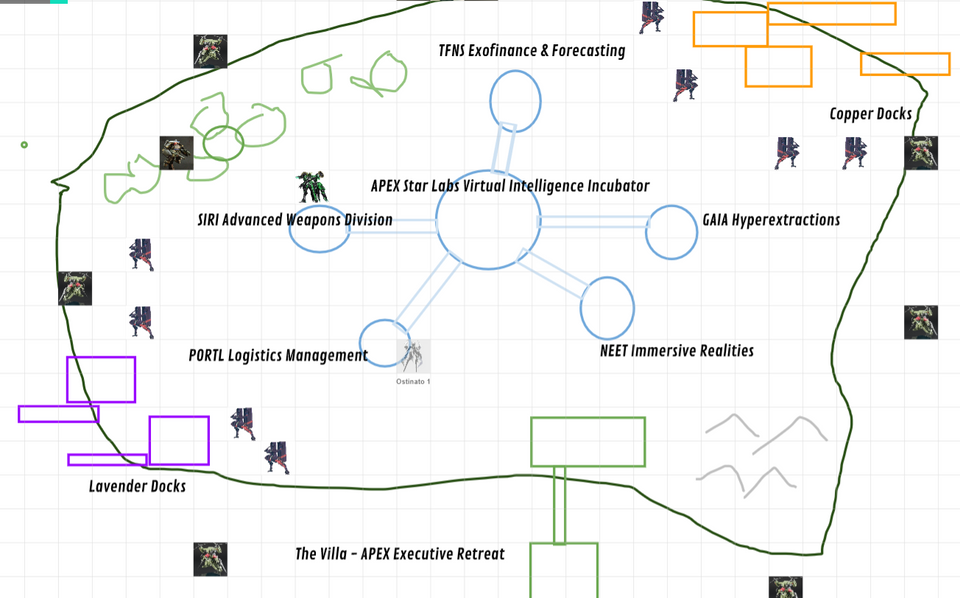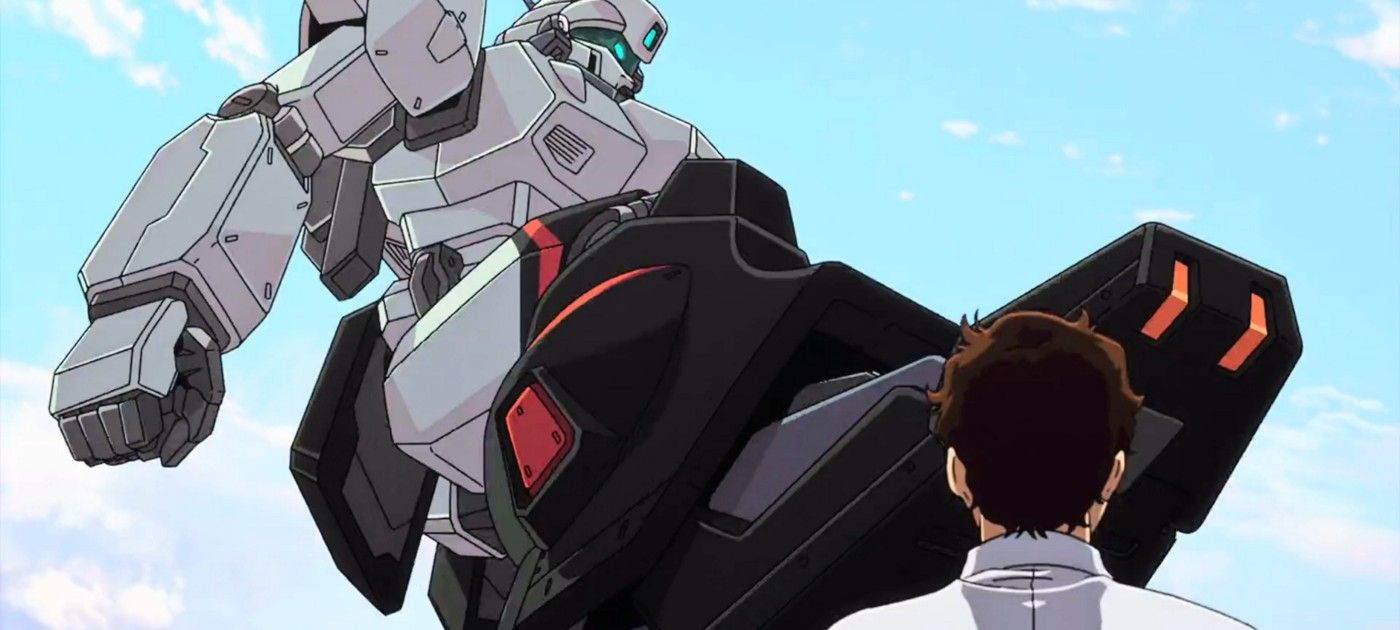Scaffolding and Intention

Happy Friday, bits and bobs!
Haven't made much progress on game design this week as I've been pretty busy with my day job (back to back day-long workshops, hooray!) and it's an off-week for Playtest Zero so I didn't get any playtesting done this week either.
I did manage to play some games this week though! It's a pretty mech-filled week as we got back to our regular Steel Beam Saber campaign with my regular group after some time playtesting Spectres of Brocken, then I played a one-shot of Mobile Frame Zero: Firebrands and got to try out the new Violence Erupts game by Meguey and Vincent Baker (which I believe you can only access currently through their Patreon), and finally I played a one-shot of Navathem's End over on the Plus One Exp stream this morning (no mechs, but there were colossal monsters!).
It's been a while since I've played Mobile Frame Zero: Firebrands, but I was reminded of just how much I love the game this week and how I really love the ways it gives you so many cool prompts and questions to play off of and within while being so economical with its physical and metaphorical space.
The new Violence Erupts game in particular was really interesting to explore as it achieves similar aims to what I want Blood to cover in Spectres of Brocken's Conflict Phase: show the outsize impacts and costs of war.
Violence Erupts does this by situating things very clearly in populated spaces - the city, the estates, the countryside. There are civilians there and they will come to harm when the fighting happens. There are mecha involved and they can bring violence at a scale and speed that is terrifying. The game constantly asks you: Are you there? Are you affected? Are you safe? Because when Violence Erupts, there are no guarantees.
[Content warnings: war, the impersonal violence of collateral damage in war at a large scale, child endangerment.]

Vincent Baker's notes reference the chaotic battle in the streets of Davao in Mobile Suit Gundam: Hathaway (I always want to put Hathaway's Flash, official title be damned), where people are scrambling to get away from the mechs fighting with no regard for their safety and where the Federation forces that are supposedly "protecting" Davao fire their weapons toward the city in their zeal to take out their enemy. "Striking visuals of trashcan-sized bullet casings raining down..." also immediately reminded me of this scene from Gundam F91 where a woman is hit and killed by a massive bullet casing ejected out of a mech's weapon that wasn't even pointed at her. When you are fighting at that scale, you no longer need to direct violence at someone to inflict it upon them.
Blood is a mechanic that draws from the same references. It's a reminder about consequences and scale. Whenever a Pilot uses a mech in a dangerous manner, there's always a chance that another player can introduce Blood, which can lead to either the Pilot losing a part of themselves or losing something they care about.
After playing with Violence Erupts, I'm realizing that an issue I'm having with Blood and honestly a whole lot of Spectres of Brocken is the lack of context and specificity to deliver on intent. Stuff that I've often called "scaffolding". With Spectres, I leave a lot of moves and rules fairly broad because I want them to be flexible enough to be applied in multiple situations. You could say that the scaffolding in this case is widely spaced.
However that comes with a cost. You kinda need to have a good grasp on the type of stories and situations prevalent in mecha fiction to then fit the open-ended moves to them, rather than look at some prompts and adjust your fiction to accomodate them. I realize that the cost that I pay is a whole lot lower than other people playing the game because I obviously know what influences I'm drawing from when designing the move and so have "built-in" prompts in my head already.
To extend the metaphor, when your scaffolding is sparse, it requires players to really know ahead of time where and how they want to move to then figure out which parts of the scaffolding they can use to get there. They have to study the scaffolding and plan out their route so as not to get stuck. When you have a good amount of scaffolding, players shouldn't need to plan too much ahead because it is more obvious where and how they can move through the scaffolding.
I'm realizing this thought ties back to my earlier post on playtesting and back to last week's thoughts on turn structures.
Conversely, you could have "too much" scaffolding and it becomes trivial which way you go and the scaffold instead becomes a ladder or a path. This kinda ties in to another thing I've been mulling on which is the idea of "intent" in game design. "Intentional design" is talked about often as a purely positive thing. Surely you want to design things in a "thoughtful", "directed" manner and make sure that things work "as intended" (you could also argue that "intentional design" is a tautology since the word "design" already implies intentionality). Scaffolding and rules and mechanisms and procedures and systems are ways you can convey intention in game design.
(I use "convey" here. "Communicate" works too, implying a back-and-forth. "Enforce" is hubris and "fulfill" is folly.)
However, intention and its fulfilment isn't the be-all and end-all of game design, because we have to allow for play. Play and players subsume and subvert any intent in game design. Look to the practices of speedrunning or challenge runs or fanworks or custom modes or hacking or trolling or homebrewing or "not rolling any dice last session". Players will find ways to play with your game, regardless of your intentions and all the fancy words and ideas and technologies you've deployed to convey them.
I'm reminded here also of Avery Alder's tweet about leaving blanks and allowing the game to come to fruition through the players.
That's not to say we should give up on intent. It just needs to come with healthy consideration and humility and surrender and trust, that the sickos you play your games with will take it where they need it to go
So I come back to scaffolding. I like scaffolding as a metaphor, because I can see how it still allows play within it. There is space to play with scaffolding, like swinging from them, or jumping through them, treating them like parallel bars in gymnastics or a jungle gym at a playground or pulling them off as an unlikely weapon like Jackie Chan.
I'm going to take a long hard look back at Blood and scenes and Spectres of Brocken and see how I can lower some costs of engagement, and investigate what other fun scaffolds I can build to play with.
Intentional regards,
Aaron
P.S. - Moving forward, I'll probably adjust the pace of this newsletter. I'm still not sure what it'll end up being. If it was just "giving updates on games work", then monthly would probably be the best bet. However, I do enjoy having this avenue to collect and work through my thoughts on games and gamemaking on a more regular basis.
So I guess what I'll try out for now is this: At the end of every month I'll do an update on my games work and any thoughts or lesssons learned related to those playtests and updates. In between though, I'll send out sporadic newsletters on game design ideas and musings if and when I have them, but no more than one newsletter in any given week. Hope that works for you!
